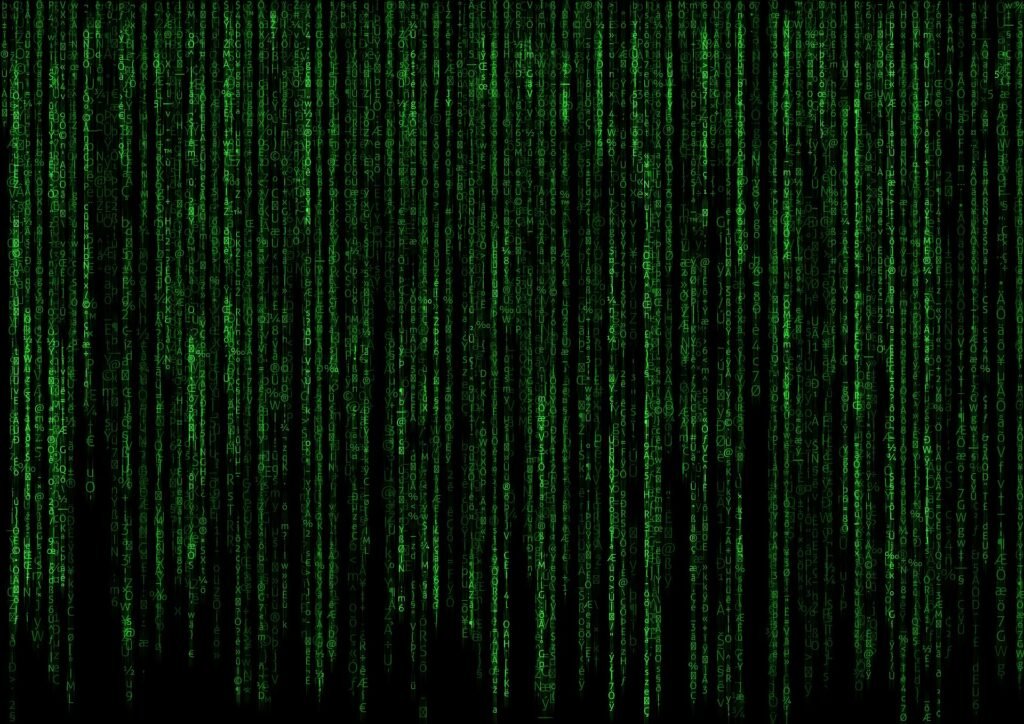Perhaps the most exciting and sometimes frustrating part of starting your own business is finding the perfect domain name. Some questions you might be asking yourself are: Where should I buy from? What kind of domain do I need? How do I point it to my website? How much should I expect to pay? How do I find the perfect name? I’ll help answer those questions here (hopefully!)
Remember, your Domain Name is part of your brand identity. It needs to be perfect!
What is a domain name?
Let’s start with the basics:
What is a domain name and why do you need one? A domain name is a user friendly string of text which points to an IP address.
HEY! YOU SAID NO JARGON! OK let’s expand on that a bit…
What is an IP address? IP stands for ‘Internet Protocol’. An internet protocol address is a numeric label which is given to a a piece of equipment connected to a network, for the purposes of identifying it and locating it. When thinking about your website, you are going to set up a nice friendly domain name (such as www.vurny.com) and point it to an IP address (such as 141.136.39.75). As a reasonably simplistic analogy, think of this IP address as the map coordinates directing the user to the actual hosted files of your website. In a similar way to looking for directions on Google maps, you would tend to search for a friendly term like ‘London’ rather than 51.5230° N, 0.0803° W. On the internet we generally use a friendly domain name rather than the IP address for pretty much the same reason.
To go into slightly more detail (which you don’t need to know at this stage so feel free to skim through!) an IP address is made up of a 32-bit number. Which is organised in to four 8-bit sections. WAIT! WHAT’S A BIT!?
I’ll try to keep this as simple as I can (and there are different IP versions now to contend with so please go easy on me!) If you’ve ever seen The Matrix, then you know that the world of computing is made up of 1’s and 0’s called binary code right? A ‘bit’ is simply that; either a 1 meaning “yes” or a 0 meaning “no”. So an 8-bit number is a string of 8 yes’s or no’s, for example: 10001101. Everything in the language of computing is made up of bits. The letter ‘A’ is actually ‘01000001’ in computer lingo as an example.
Bonus fact! We call 8 bits a byte. 1024 bytes is called a Kilobyte (Kb). 1024 Kilobytes is called a Megabyte (Mb). And 1024 Megabytes is called a Gigabyte (Gb). So 1Gb of data is essentially eight and a half billion 1's and 0's! (approximately)
In an IP address we display these blocks of 8 bits slightly differently. For each 8-bit section there are 256 possible values all the way from 00000000 to 11111111, so we display each of the four 8-bit blocks as a number relating to where they fall in the sequence, and seperate these with a decimal point inbetween. So when we write 141.136.39.75, the computer reads this as 10001101 10001000 00100111 01001011. This presents the map coordinates of a specific location it needs to direct the user to.
Finally, before we move on to purchasing a domain name, let me briefly tell you how we connect our friendly domain name to the map coordinates (IP address). Well, we effectively use a translator. The translator is called DNS (which stands for Domain Name System), and there are many DNS servers around the world whose job it is to translate the friendly name into an IP address and essentially direct the traffic. You will need to configure your DNS once you purchase your domain name. I’ll cover this in a seperate article, but for now this is what you need to know:
- You will buy a domain name
- You will point that domain name to a host IP address using DNS
- The IP address directs users from your domain name to your website (or your host).

OK that’s the heavy lifting done! Let’s get on to the fun stuff!
Choosing and buying a domain name
This Content Is for Subscribers Only!
No doubt you already have some idea of what domain name you would like, but bear in mind that the chances are that unless it’s super obscure, somebody already owns it. If it is owned, it may cost you a lot of money to purchase from a private seller. For example ‘www.cakeshop.com’ is probably owned and may cost upwards of $50000 to purchase. But www.mywonderfulfabulouscakeshop.com may be unassigned and therefore freely available to purchase from a registrar for around $10.
First of all consider some keywords you would like in you domain name. Or if you are looking for your brand name, consider what other words you might use as well. e.g if yourbrandname.com is not available, would yourbrandname-online.com work for you? And secondly consider what kind of TLD you would like. HUH??? YOU JUST JARGONED ME AGAIN! Sorry, yes there is a wee bit more heavy lifting to do before we can get to the fun – let me explain…
Your domain name is made up of two particular sections called the Second-Level Domain (SLD) and the Top-Level Domain (TLD). The SLD is the part which is personal to you (in the above example ‘yourbrandname-online’) and the TLD is the bit after the dot e.g. the ‘com’ or the ‘co.uk’.
There are lots of different TLD’s available and some are more desireable than others. A ‘.com’ domain name arguably remains the most desireable, but it is therefore also the most difficult to find at a reasonable price for a good name, so you may wish to consider a .co or a .net or a .biz instead for example.

Can I have any TLD? A reasonable question is can you choose any TLD, for example if you wanted your surname to make the website www.john.smith. The simple answer is no (unless your surname happens to match an approved TLD), but you can choose from a lot! And there may be some that suit your business. For example if you are a photographer you might choose www.johnsmith.photography.
Until around 2011 there were only 22 types of TLD, and now there are over 1250 to choose from!
TLD’s are managed by a department called the Internet Assigned Numbers Authority (IANA) in a global organisation called ICANN, whose job is to choose and approve acceptable TLD’s based on certain approval criteria.
There are 3 types:
Generic Top-Level Domains (gTLD) – such as .com, .net, .org, .money, .email, .company.
Sponsored Top-Level Domains (sTLD) – such as .gov (reserved for governments) and .edu (reserved for education organisations).
Country code Top-Level Domains (ccTLD) – such as .uk (United Kingdom), .us (USA), .cn (China). Some of these are enforced with residency restrictions. E.g. if you want an Australian .com.au domain, you will need to prove you have a registered business in Australia.
You can check out if there are any restrictions on the use of your preferred TLD by checking out the ICANN website.
So, now we have some idea of the domain name we want, how do we find it?
Finding a domain name
Essentially there are two ways to buy a domain name:
- Buy a name which is not currently owned/reserved. This will be nice and cheap and available pretty much anywhere you look (more on that in a moment). Or,
- Buy a name which somebody owns and is willing to sell. For that you will need a brokerage service.
Let’s look at the first one. Assuming your domain name is available, you can purchase it from pretty much any domain registrar or reseller website. If you are after a ccTLD you may need to find a reseller in your local country but otherwise you can buy from anyone. The big brands are GoDaddy, Google, Bluehost and a million more. I would STRONGLY advise hunting around as prices differ wildly. Make sure you check the renewal fee as well as the sign up fee. Generally you pay for a domain annually and a lot of companies offer you a very cheap first year with a much higher ongoing renewal cost. You should expect to pay somewhere between $10-40 per year for your gTLD domain name registration depending on which type you choose.
Before you jump in also consider if you are going to need hosting, and if so, what hosting you will need (seperate article here). A lot of registrars also offer hosting packages and some hosts offer free domain registration too, so it is worth getting this right in your mind before committing.
Personally I use Hostinger for all my domain name registrations AND hosting requirements. I find them reasonably priced and user friendly.
If your desired domain name is taken, perhaps it is available to buy via a brokerage service. The biggest (and in my opinion the best) of these is sedo.com. Sedo run auction style sales as well as fixed price sales and are one of the biggest brokers out there. They will guide you through the process of buying, and make sure you are protected during the transfer of the domain by offering a full transfer service. This means the seller doesn’t receive any cash until the transfer is fully completed.
Try this search which will take you through to the Sedo website:
Another great site to make use of is name.com. These guys are a domain registrar in their own right, but their search will tell you if the name you are after is either freely available to buy from the registrar (i.e. cheap!), not available (i.e. owned and not for sale) or available as a premium domain (i.e. owned and listed for sale). They also list some alternatives to your chosen domain which may be a bit easier to get hold of so they are good for helping you to generate name ideas with one eye on cost. I tend to use this site to help in my search, and then purchase my chosen domain name from my preferred supplier.
So that is pretty much it! Now you know what a domain name is for and how to find a good one. Start hunting for your perfect domain name, consider what hosting you might need and then purchase a domain and hosting (if required) from your preferred provider. You are on your way! Next you’ll need to set up your new email address and then ride off into the sunset!



